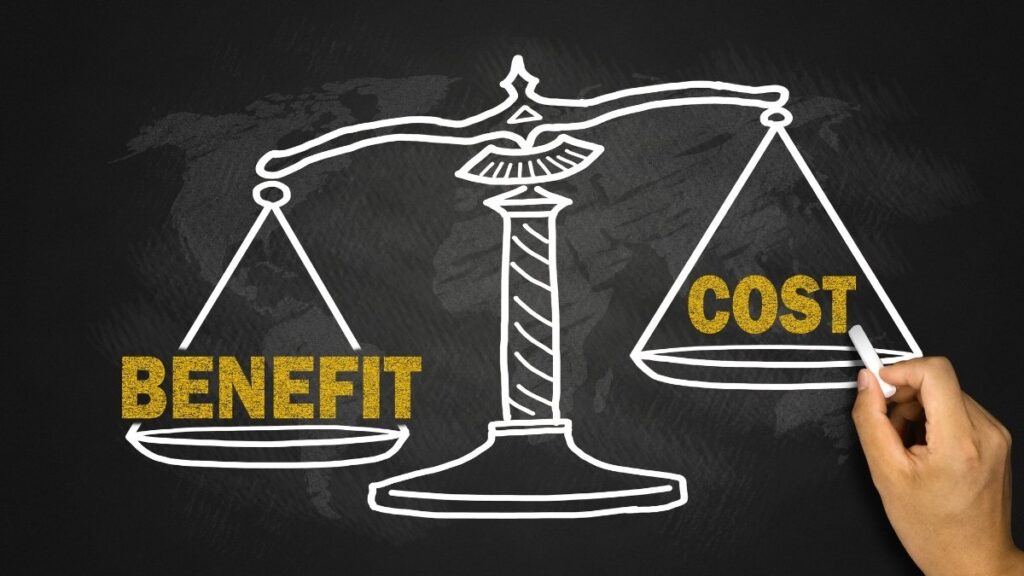In the complex and often turbulent landscape of retirement planning, investors are conditioned to seek safety and avoid catastrophic loss.
The prevailing wisdom cautions against speculative ventures, over-concentration in volatile assets, and exotic financial instruments.
Yet, in 2025, the single greatest threat to the long-term viability of American retirement plans is not a high-risk stock or a complex derivative. It is an asset so ubiquitous, so universally trusted, that it hides in plain sight: excess cash.
Deconstructing the “78%”: The Dangerous Allure of Feeling Comfortable

The foundation of this widespread financial vulnerability lies in a powerful and misleading paradox.
A 2025 Gallup poll reveals a striking statistic: 78% of currently retired Americans report that they have enough money to live comfortably. On the surface, this appears to be a resounding success story for retirement planning.
However, when viewed through the lens of portfolio allocation, this figure becomes the cornerstone of the “Comfort Illusion.” This high level of reported comfort is dangerously correlated with investment behaviors that undermine long-term financial health.
A separate 2025 investor survey from Janus Henderson provides the critical link, finding that a primary driver for holding large cash balances is the pursuit of “financial peace of mind” and “comfort”.
Investors, particularly as they near retirement, prioritize the emotional security that comes from stability and immediate accessibility, leading them to hoard cash.
This suggests that the 78% of retirees who feel comfortable are, in many cases, achieving that feeling by engaging in a strategy—over-allocating to cash—that actively erodes the real value of their nest egg.
The Silent Destroyer: How Cash Wages a War of Attrition on Your Wealth
According to the most recent data from the U.S. Bureau of Labor Statistics (BLS) for September 2025, the Consumer Price Index for All Urban Consumers (CPI-U) registered a 3.0% increase over the preceding 12 months.
This figure, confirmed across multiple economic reports, represents the benchmark against which all “safe” investments must be measured. Any asset yielding less than 3.0% annually is actively making its owner poorer in real terms.
Establishing the Hurdle: The 2025 Inflation Benchmark

To understand the destructive power of cash, one must first define the adversary. For any retirement investment, the primary, non-negotiable objective is to generate a return that exceeds the rate of inflation.
This ensures the preservation and growth of real purchasing power, which is the ability to acquire goods and services. An investment that fails to clear this hurdle is, by definition, losing value.
According to the most recent data from the U.S. Bureau of Labor Statistics (BLS) for September 2025, the Consumer Price Index for All Urban Consumers (CPI-U) registered a 3.0% increase over the preceding 12 months.
This figure, confirmed across multiple economic reports, represents the benchmark against which all “safe” investments must be measured. Any asset yielding less than 3.0% annually is actively making its owner poorer in real terms.
The Losing Battle: Analyzing the Real Returns of Cash and Equivalents

When measured against the 3.0% inflation hurdle, the entire spectrum of cash and cash-equivalent instruments reveals itself to be a losing proposition for long-term wealth.
A systematic analysis of available yields as of October 2025 demonstrates that these assets are fundamentally incapable of generating meaningful real returns.
Standard Savings and Brokerage Accounts: The most accessible forms of cash are also the most destructive. The national average Annual Percentage Yield (APY) on a standard savings account stands at a mere 0.62%.
The situation is often worse for uninvested funds within retirement and brokerage accounts. This “sweep” cash, which many investors hold unintentionally, frequently earns a yield of around 0.45%. Holding funds in these vehicles guarantees a significant real loss of over 2.5% per year.
High-Yield Savings Accounts (HYSAs): For more diligent savers, HYSAs offer a seemingly attractive alternative. As of October 2025, the top rates offered by leading online banks range from 4.0% to 4.35% APY.
While these yields appear to clear the 3.0% inflation hurdle, this is a pre-tax illusion. For an investor in a 24% federal tax bracket, a 4.26% APY translates to a post-tax yield of approximately 3.24%, leaving a real return of just 0.24%.
This razor-thin margin offers negligible wealth creation and can easily be erased by state taxes or a slight uptick in inflation.
Certificates of Deposit (CDs): Locking money away for a fixed term offers little additional benefit. The top nationally available rates for a 1-year CD are similarly clustered around 4.32% APY.
Like HYSAs, these instruments provide a nominal return that barely surpasses inflation before taxes are considered, and they come with the added drawback of penalties for early withdrawal, reducing their utility as a truly liquid emergency fund.
Quantifying the Erosion: The Long-Term Cost of Playing It Safe

The true cost of holding excess cash is not just an abstract percentage but a tangible, compounding loss that can be quantified in dollars.
The decision to remain in cash is a decision to accept a predictable negative return and, more damagingly, to forfeit the compounding growth that is essential for a successful retirement.
The following projection illustrates this compounding disadvantage. It compares the future value of a $100,000 portfolio allocated to a top-tier HYSA versus a conservative, diversified investment portfolio over a decade.
The $100,000 Mistake!
Thinking “safe” cash is a smart move? Think again. It’s a tangible, compounding loss that eats away at your retirement. The choice isn’t “safe vs. risky,” it’s “losing slowly” vs. “growing.”
Path 1: “Safe” Cash (HYSA)
Path 2: Conservative Investment
The 10-Year Difference…
The Psychology of Safety: Why We Cling to a Depreciating Asset
This fear translates directly into portfolio decisions. A 2025 survey from Janus Henderson revealed that an astonishing 57% of investors nearing retirement hold 12 months or more of expenses in cash.
The stated reasons for this behavior are a desire for “stability” and “accessibility,” underscoring a deep-seated aversion to the perceived risks of investment markets.
The Behavioral Drivers: Fear, Volatility, and the Flight to Perceived Safety

The widespread over-allocation to cash is not a failure of mathematics but a triumph of emotion.
The decision to hold wealth-eroding assets is rooted in powerful behavioral drivers that prioritize short-term psychological comfort over long-term financial optimization.
A 2023 survey by Allianz Life Insurance Company found that 62% of retirement savers explicitly prefer the safety of cash over navigating volatile markets, even if it means accepting lower returns.
This preference is a direct response to the anxiety produced by market fluctuations.
The Peril of Inertia: The Unintentional Cash Hoard

While fear is a powerful motivator, an equally significant, and perhaps more insidious, driver of excess cash holdings is simple inertia.
A large portion of the cash languishing in retirement accounts is not the result of a deliberate, risk-averse choice but rather a consequence of inaction and misunderstanding.
Groundbreaking research from Vanguard into the behavior of investors with Individual Retirement Accounts (IRAs) exposed this critical “awareness gap.”
The study focused on individuals who had rolled over funds from an employer-sponsored 401(k) plan. It found that of those whose assets remained in cash, a staggering 68% did not realize how their money was invested.
Furthermore, 48% mistakenly believed that their contributions would be automatically invested upon deposit, similar to how a 401(k) plan often defaults contributions into a Target-Date Fund.
Sizing the Problem: The Aggregate Cost to American Savers

The scale of this problem is immense, representing a multi-trillion-dollar drag on the nation’s retirement readiness.
As of the second quarter of 2025, total U.S. retirement assets stood at $45.8 trillion, with $13.0 trillion held in defined contribution (DC) plans like 401(k)s and $18.0 trillion in IRAs.
To contextualize this at the household level, consider the median retirement account balances. According to the 2022 Survey of Consumer Finances (SCF), the median balance for households aged 55-64 was $185,000.
Vanguard’s data from 2023 shows a median balance of $87,571 for participants in the same age group.
Applying a 29% cash allocation to these figures means the median household has between $25,000 and $54,000 sitting in assets that are failing to keep pace with inflation. This is not idle capital; it is a significant portion of their nest egg that is actively shrinking in real value, year after year.
A Framework for Financial Resilience: Re-architecting Your Approach to Cash
The solution to the destructive effect of excess cash is not to eliminate it entirely, but to manage it with purpose and precision.
A disciplined framework is required to distinguish between cash held for necessary liquidity and cash held out of fear or inertia. By segmenting cash holdings and deploying them intelligently, investors can build a resilient financial foundation without sacrificing long-term growth.
Redefining “Cash”: The Three-Tier Liquidity Framework

A sophisticated approach to cash management moves beyond a single, monolithic cash pile and instead segments liquidity into three distinct tiers based on purpose and time horizon.
Tier 1: Transactional Cash. This tier consists of the funds needed to cover regular, predictable monthly expenses. It should be equivalent to 1-2 months’ worth of living costs and held in a standard checking account for maximum liquidity.
The interest yield on this tier is irrelevant, as its sole purpose is to facilitate daily financial life.
Tier 2: Emergency Fund. This is the core safety net, designed to cover unexpected major expenses such as medical bills, urgent home repairs, or a sudden loss of income.
Financial experts generally recommend this fund hold 3-6 months’ worth of essential living expenses. The primary requirements for this tier are principal safety (FDIC or NCUA insurance) and high liquidity. However, its yield should be optimized to mitigate the effects of inflation.
Tier 3: Strategic Cash / “Dry Powder”. This tier is for funds earmarked for specific, foreseeable goals within the next 1-3 years, such as a down payment on a property, a planned large purchase, or capital set aside to take advantage of significant market downturns.
Because the timeline is slightly longer and more predictable, these funds can be placed in instruments that offer a higher yield in exchange for slightly reduced liquidity.
Optimizing Your Safety Net: Deploying Cash Intelligently

Implementing the three-tier framework requires selecting the appropriate financial instruments for each purpose.
Optimizing Tier 2: The emergency fund should be held in a high-yield savings account (HYSA) or a high-yield money market account.
As of October 2025, top-tier HYSAs and money market accounts are offering APYs of approximately 4.25%, significantly outperforming the national average and providing a crucial buffer against inflation for these essential funds.
Optimizing Tier 3: For strategic cash, a more structured approach can enhance returns while managing liquidity. A Certificate of Deposit (CD) or Treasury Bill (T-Bill) ladder is an effective strategy.
This involves dividing the Tier 3 capital into multiple tranches and investing them in a series of CDs or T-Bills with staggered maturity dates (e.g., 3-month, 6-month, 9-month, and 12-month).
As each instrument matures, the funds become available for use or can be reinvested at the longest duration to maintain the ladder.
The 2025 Contribution Supercharge: An Offensive Strategy

For investors who recognize they have an over-allocation to cash, one of the most powerful immediate remedies is to aggressively maximize contributions to their tax-advantaged retirement accounts.
The Internal Revenue Service (IRS) has announced the inflation-adjusted contribution limits for 2025, which include a significant new provision from the SECURE 2.0 Act that creates a powerful opportunity for those nearing retirement.
The 2025 limits create distinct tiers for savers based on age, with a new “super catch-up” provision for individuals aged 60 through 63. This allows those in their peak earning years to make substantial contributions and directly counteract the drag from underperforming cash holdings.
Beyond Cash: The Future of Growth in Retirement Portfolios
Modern investment vehicles have made accessing broad market returns more efficient than ever. Major S&P 500 exchange-traded funds (ETFs), such as the Vanguard S&P 500 ETF (VOO) and the iShares Core S&P 500 ETF (IVV), have expense ratios as low as 0.03%.
This translates to an annual cost of just $3 for every $10,000 invested. This near-zero cost structure stands in stark contrast to the hidden “cost” of inflation on cash, which amounts to a 3.0% annual drag, or $300 per $10,000.
For the long-term investor, the choice between paying a minimal fee for potential growth and accepting a significant, guaranteed loss of value is clear.
The Enduring Case for Equities: The Engine of Real Growth

The most direct and effective antidote to the corrosive effects of cash is a disciplined, long-term allocation to growth assets, primarily equities.
While cash guarantees a loss of purchasing power, a diversified portfolio of stocks has historically been the most reliable engine for generating the real returns required to fund a multi-decade retirement. The key to harnessing this power lies in minimizing costs.
Modern investment vehicles have made accessing broad market returns more efficient than ever. Major S&P 500 exchange-traded funds (ETFs), such as the Vanguard S&P 500 ETF (VOO) and the iShares Core S&P 500 ETF (IVV), have expense ratios as low as 0.03%.
This translates to an annual cost of just $3 for every $10,000 invested. This near-zero cost structure stands in stark contrast to the hidden “cost” of inflation on cash, which amounts to a 3.0% annual drag, or $300 per $10,000.
For the long-term investor, the choice between paying a minimal fee for potential growth and accepting a significant, guaranteed loss of value is clear.
The New Frontier: Demystifying Alternative Investments in Your 401(k)

A significant policy development in 2025 is poised to reshape the landscape of retirement investing.
On August 7, 2025, an Executive Order was issued directing the Department of Labor (DOL) and the Securities and Exchange Commission (SEC) to review and issue guidance aimed at facilitating greater access to alternative assets within 401(k) and other defined contribution plans.
These assets include private equity, venture capital, private credit, and real estate—classes historically reserved for institutional and high-net-worth investors.
The primary challenges associated with integrating alternatives into 401(k) plans are threefold:
Illiquidity: Unlike publicly traded stocks and bonds, private investments are inherently illiquid. They cannot be bought or sold on a daily basis and often require capital to be locked up for periods of 7-10 years or more.
This poses a fundamental challenge for 401(k) plans, which are built on a framework of daily valuation and participant liquidity.
Complexity and Fiduciary Burden: These are not simple investments. Evaluating a private equity fund requires sophisticated due diligence that is likely beyond the capacity of most individual investors and even many small plan sponsors.
As noted in legal analysis by experts such as Josh Lichtenstein of Ropes & Gray, the decision to include such assets places an immense fiduciary responsibility on plan sponsors to conduct robust diligence, ensure proper valuation, and manage liquidity—all while navigating a complex regulatory environment under ERISA.
A Prudent Path Forward for Retail Investors

Given these significant hurdles, direct investment in alternative assets is not a suitable path for the vast majority of 401(k) participants.
A more prudent approach for gaining exposure is through professionally managed, multi-asset vehicles that can incorporate a small, carefully vetted allocation to alternatives within a broader, diversified portfolio.
Vehicles such as Target-Date Funds (TDFs) and Collective Investment Trusts (CITs) are well-suited for this role.
The fiduciaries managing these large, sophisticated funds have the expertise and resources to perform the necessary due diligence, negotiate more favorable fee structures, and manage the liquidity challenges associated with private market investments.
By including a modest “sleeve” of alternatives within a TDF, for example, participants can potentially benefit from the return-enhancing and diversifying properties of these assets without taking on the direct risks and complexities themselves.
The cost differential between traditional and alternative investments remains a critical factor for investors to understand. The following table provides a simplified but powerful illustration of how fees can impact returns.
This stark comparison highlights the critical importance of understanding the true cost of accessing alternative markets. While they may offer the potential for higher gross returns, the net return delivered to the investor after fees can be substantially lower.
For now, the most sensible path for retirement savers is to rely on low-cost, liquid, and transparent public market investments as the core of their portfolio.
Your Action Plan: Moving from Passive Risk to Active Prosperity

Transitioning from a state of passive risk to active management requires immediate, concrete action. The following five-step audit will provide a clear snapshot of an individual’s current cash exposure and form the basis for strategic redeployment.
Consolidate and Identify: Log into every financial account, including all retirement accounts (401(k)s, IRAs), brokerage accounts, and bank savings/checking accounts. For each account, identify the exact dollar amount held in cash, money market funds, or default sweep accounts.
Uncover the Yield: For each cash position identified, determine the current Annual Percentage Yield (APY). Pay special attention to the default sweep rates in brokerage and IRA accounts, as these are often exceptionally low.
Calculate Total Exposure: Sum the total cash balance across all accounts. Calculate this figure as a percentage of the total investment portfolio and also as a multiple of average monthly living expenses.
Apply the Framework: Using the Three-Tier Liquidity Framework, categorize every dollar of cash. Assign appropriate amounts to Tier 1 (Transactional), Tier 2 (Emergency), and Tier 3 (Strategic). Any cash remaining after these buckets are filled is “excess cash.”
Formulate a Redeployment Plan: For the cash in each tier, determine the optimal holding vehicle. Move Tier 2 funds to a top-tier HYSA. Structure Tier 3 funds into a CD or T-Bill ladder. Develop a clear, time-bound plan to invest the “excess cash” into the long-term, growth-oriented portion of the portfolio.
Tailored Strategies for Every Life Stage

The optimal allocation and strategy for managing cash and investments evolves throughout an investor’s life. A one-size-fits-all approach is ineffective; strategies must be tailored to one’s time horizon and financial goals.
The Accumulator (40s to early 50s): The primary objective for this group is aggressive growth. The time horizon is long enough to weather market volatility. The strategy should be to hold no more than a fully funded Tier 2 Emergency Fund (3-6 months’ expenses) in a high-yield savings account.
All other capital, including all new contributions, should be systematically deployed into a diversified portfolio of low-cost growth assets, primarily global equities. The focus is on maximizing compounding over the long term.
The Pre-Retiree (late 50s to early 60s): This stage requires a delicate balance between continued growth and increasing capital preservation.
The strategy involves a more robust liquidity buffer. In addition to a fully funded Tier 2 Emergency Fund, this investor should begin building a 1-2 year Tier 3 Strategic buffer to cover the first years of retirement expenses.
The Retiree (65+): The primary goals are now income generation and risk management. The cash strategy becomes a crucial tool for navigating market downturns.
Retirees should maintain a 2-3 year income buffer in a rolling ladder of cash equivalents (HYSAs, CDs, short-term bonds). This allows them to draw their required living expenses from this stable buffer during periods of market decline, avoiding the need to sell equities at depressed prices.
Conclusion: Redefining Risk for a New Economic Era
The economic landscape of 2025 demands a fundamental re-evaluation of what constitutes “risk” in a retirement portfolio. For decades, investors have been taught that risk is synonymous with the volatility of the stock market.
This report has demonstrated that this definition is dangerously incomplete. In an era of persistent inflation, the greatest and most certain risk is not the possibility of a market downturn, but the mathematical certainty of purchasing power erosion from holding excess cash.
The “Comfort Illusion”—the pervasive belief that cash provides ultimate safety—is a behavioral trap that lures millions of Americans into a state of passive wealth destruction.
The data is unequivocal: from standard savings accounts to the highest-yielding CDs, cash and its equivalents are failing to generate the real, after-tax returns necessary to fund a secure retirement.
This silent attrition, compounded by the massive opportunity cost of forgone market growth, is the single most significant, yet widely overlooked, threat to the financial well-being of a generation of savers.

